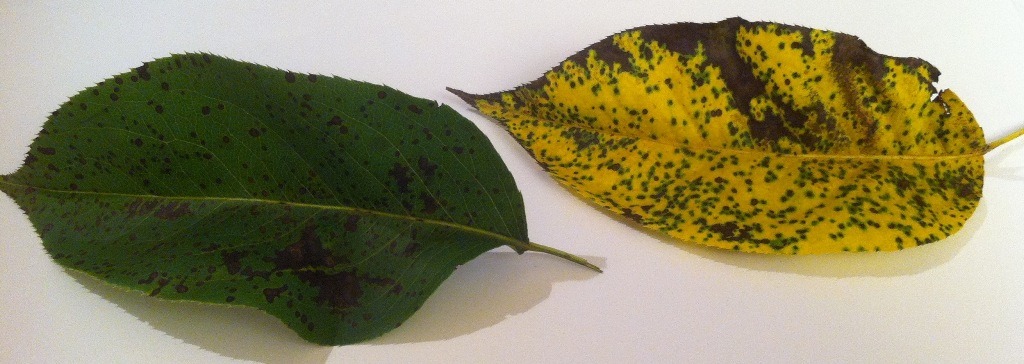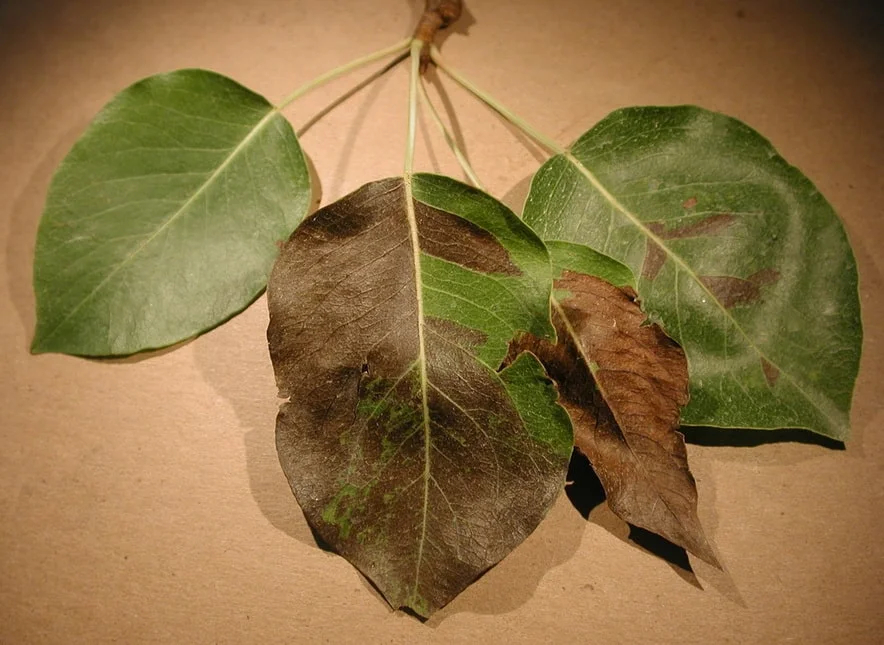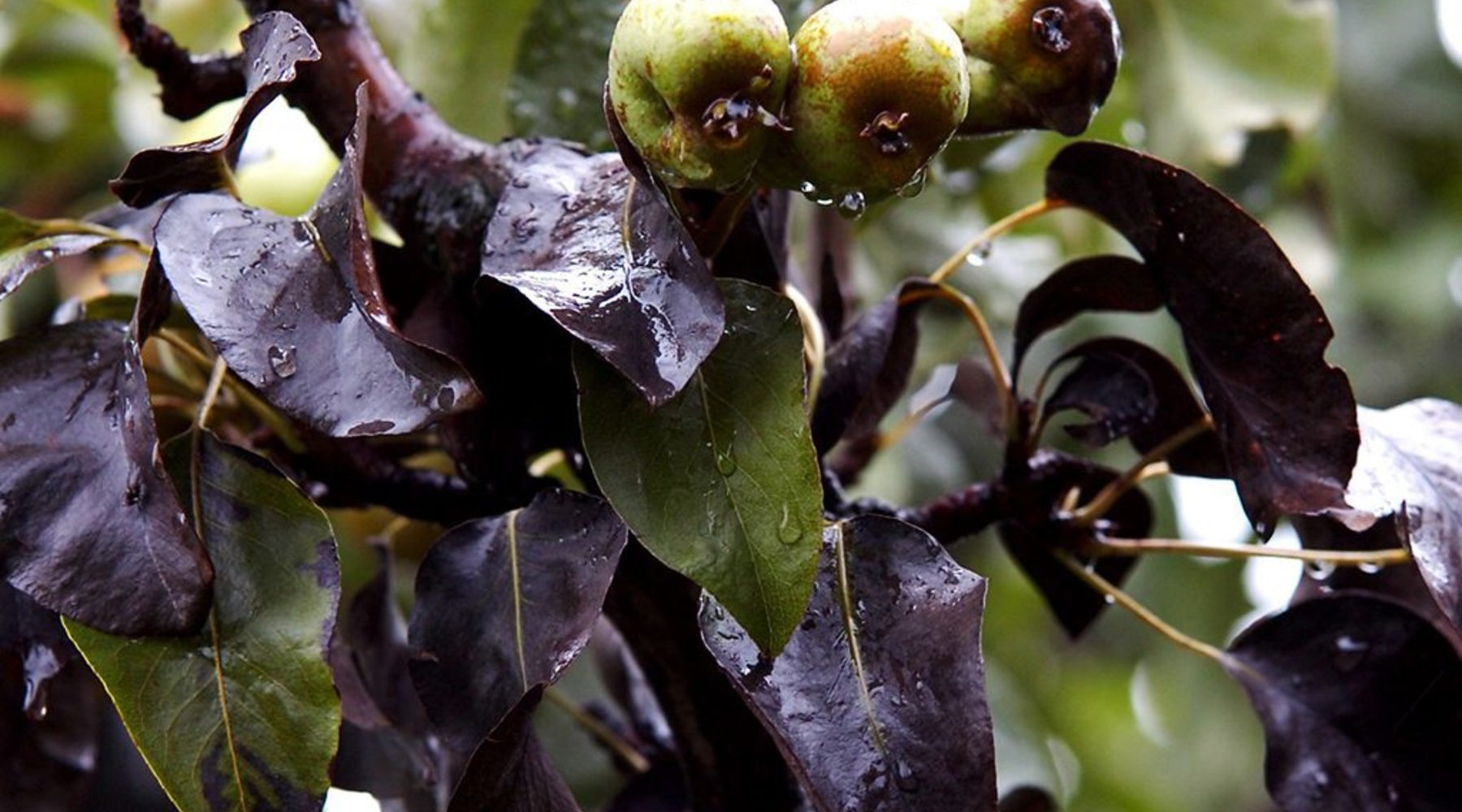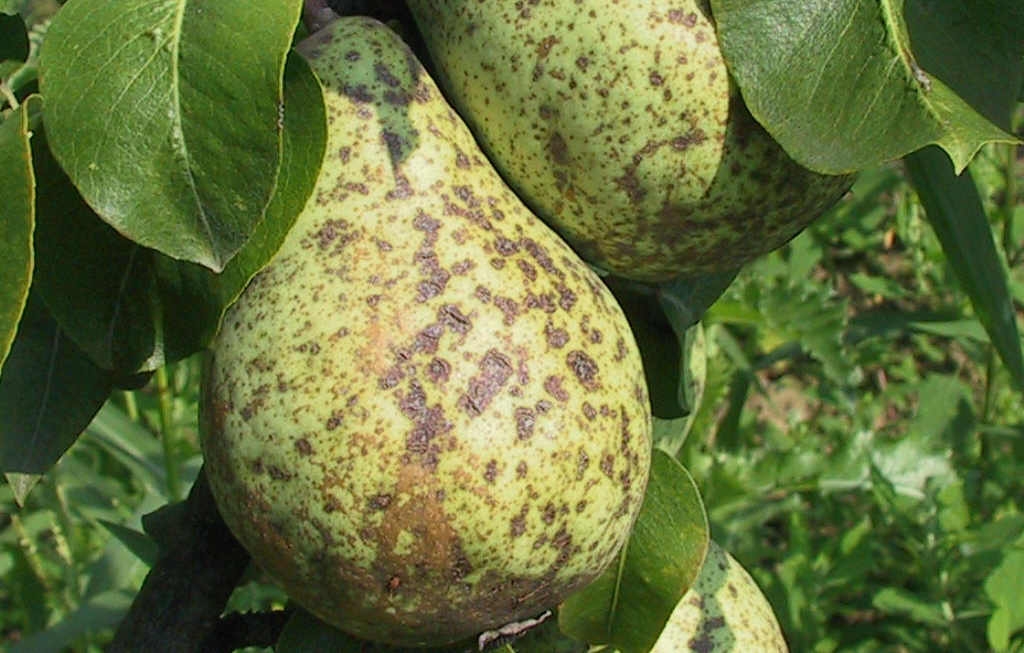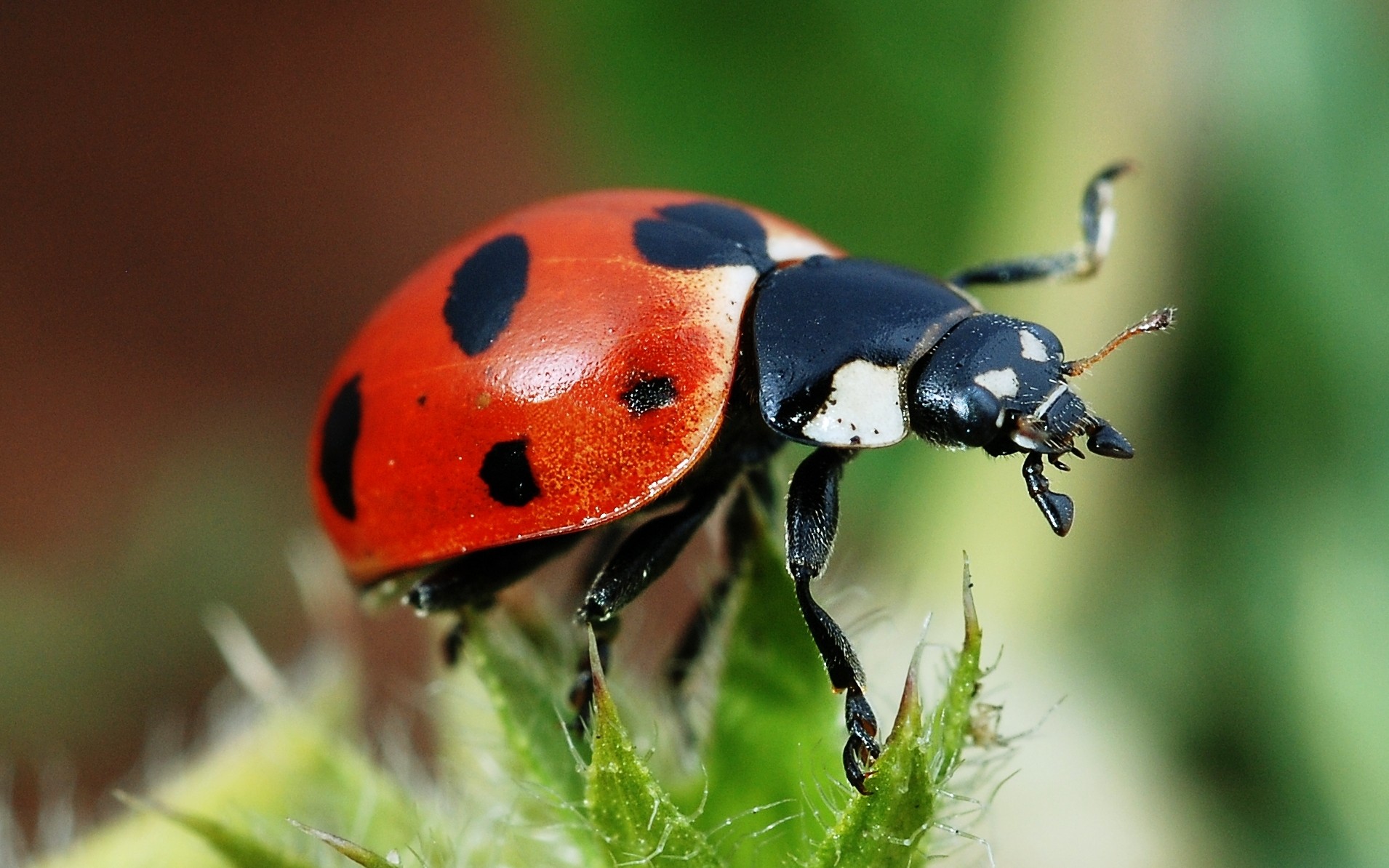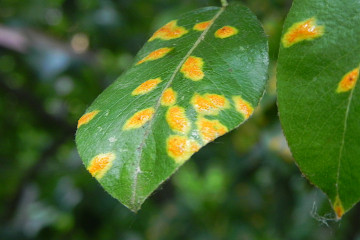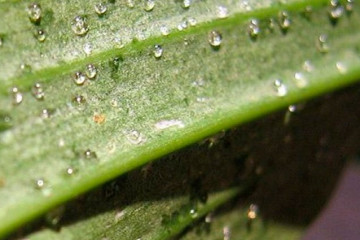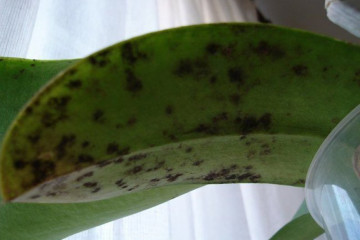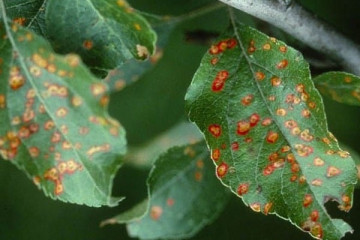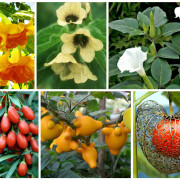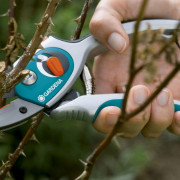Black spots on pear leaves: causes and proven treatments
Content:
The fruits of this tree are famous for their beneficial qualities for the human body. No wonder they are equated with the gifts of the gods. They contain many vitamins of different groups, which together have anti-aging and restorative qualities. They can be consumed not only fresh, but also dried. However, the sweet anticipation of the future harvest can overshadow one nuisance when black spots appear on the leaves of a pear. This can happen both naturally and under the influence of some kind of fungus.
The natural nature of the problem
Some gardeners, noticing the blackening of the leaves on the trees, believe that the harvest will no longer be, since, in their opinion, these fruits are not suitable for food. This is regarded as a sign of some kind of disease.
This is partly true, but not always black foliage accurately indicates an infection of the fruit crop. Certain natural factors also lead to similar changes.
Lack of beneficial micronutrients
With such a problem, the leaves turn yellow, starting from the tips, and then darken. This is often due to too little calcium intake. The dark leaves subsequently turn brown and then turn black and dry out. The sight of the tree itself becomes painful.
You can fight micronutrient deficiencies with the help of complex products that are filled with the compounds necessary for a pear. If the leaves begin not only to darken, but also to curl, this is a direct sign indicating boron starvation. The situation can be corrected only by feeding the tree with a complex mineral preparation. It will supply the tree with boron, calcium and other essential trace elements.
Temperature
Leaves on trees can also darken due to excessively dry air, which usually happens when the weather is hot outside. As a result, they lose life-giving moisture, as well as useful trace elements. It is important to make up for the loss, otherwise the crown of the trees will be covered with purple or brown spots, and then it will completely turn black and begin to crumble.
In this case, blackness will appear in the place where the most sunlight falls during the day. To avoid the worst, you should regularly water and spray the leaves of the trees.
Pest attacks are another cause for concern
The leaves of a pear turn black not only due to improper care or any other natural factor, a whole army of pests contributes to this. To protect fruit trees, appropriate measures must be taken in a timely manner. If you delay the struggle, then you can lose a good harvest, being content with only a little.
Pear honeydew or common leaf beetle
This pest is given out by different shades of color:
- spotted;
- yellow;
- red.
The size of insects is small - within 3 mm, no more.
Any of these varieties pose a serious danger to the fruit crop. For the winter, adults climb into the bark or damaged branches.In spring, females lay eggs to hatch larvae and develop offspring.
Subsequently, a yellow spot appears on the leaves, and they fall off. The buds themselves, along with the fruits, also suffer from such a misfortune.
Parasite control methods
An effective way to get rid of the pest is by spraying the trees, which should be done at the beginning of the season. At this time, it is just beginning to warm. It is necessary to choose a sunny and calm day. Effective treatment preparations:
- Fastak;
- Dimilin;
- Aktara;
- Sherpa.
Spraying should be divided into several stages. The first allows you to get rid of adults. The second time, the treatment destroys the larvae, and it is advisable to do this before flowering. The third spraying occurs after flowering and completely removes the remaining larvae from the tree.
Soap-kerosene emulsion is also successfully used as an effective means of combating pear leaf beetles. Kerosene is mixed with water and laundry soap. It is necessary to process pear trees in the spring, when pests leave their wintering places.
Pear Gall Mite Attack
In appearance, this insect looks more like a miniature spider - an elongated body with two pairs of legs. The diameter of the parasite does not exceed 0.2 mm. But, despite such reduced "dimensions", the harm from it is much greater. His diet includes plant sap, which threatens the appearance of black spots on the pear and drying of the foliage.
For the winter, the insect prefers to climb under the young bark, and when it gets warmer in spring, it leaves the shelter and settles on the lower part of the foliage. It remains there until the end of the season. If no action is taken, it is not just one tree that is at risk, but the whole garden.
Getting rid of a dangerous parasite
Spraying trees with acaricide preparations helps to save from the tick. Conventional insecticides are powerless against ticks. Means that are recommended for use:
- Decis;
- Inta-Vir;
- Keltan;
- Karbofos.
Pear crop processing must be carried out in two or three stages, every 10 days.
Pathological reasons
There are other equally disturbing reasons for the appearance of black spots on the foliage of pear trees. There are several of the most common infectious diseases that affect many fruit plants, including the pear.
Bacterial burn
As a rule, young trees are under threat. Ignoring treatment can lead to their death within 3-4 years. This disease occurs most often in early summer (June). In addition, there is a very high risk of contamination of the surrounding vegetation.
The causative agent is a bacterium belonging to the enterobacteriaceae group. Usually, the spread of fire blight is facilitated by pollinating insects, pests, and birds. And when it's rainy weather outside and a lot of dampness, this is a whole expanse for the development of bacteria.
Treating an infection
It is easier to prevent a bacterial burn than to treat the affected trees later. Therefore, preventive measures come first. First of all, it is necessary to carry out weeding, getting rid of weeds. After all, there will always be pests in it that will spread the infection.
When the infection has already begun to develop, it is recommended to use:
- Tetracycline;
- Ofloxacin;
- Streptomycin;
- Fitosporin.
When the leaves on the pear turn black, it is important to follow the instructions from the instructions in order to avoid an overdose of the drug.All affected areas need to be treated. This should be done in dry and calm weather, which will increase the effectiveness of treatment. It is also advisable to use preparations containing copper.
Some gardeners use a combination of lime and copper sulfate. It is also important here to avoid too much concentration of the solution, otherwise the leaves will get burned.
The darkened tops should be cut off, and then be sure to burn. For the period of treatment, feeding is strictly prohibited. This does not apply to watering, the main thing is to carry it out regularly, and in hot weather a little more often in order to avoid a lack of moisture in the trees.
With the progression of the infection, when the treatment no longer gives positive results, the affected tree is uprooted and burned. After that, all used instruments must be sterilized with a solution of carbolic acid or formalin.
Scab
An infectious disease spread by insects overwintering in uncut damaged tree shoots and fallen leaves. This ailment is also a common occurrence. Initially, black dots appear on the leaves, but as the pathogen (fungus) is active, they merge into a single spot. At the same time, the affected leaves not only change color, they also deform and dry out. In addition to black spots, there is a plaque that looks like mold.
The fungus is most active in high humidity conditions. Although often its appearance occurs in dry and hot weather, but only if there is a lot of dew. The infection is very dangerous and spreads with lightning speed, so there is a high risk that it can reach an epidemic.
The first warning signs appear after the fruit buds open. The neglected stage affects the tree bark, making its shade darker. Then the fruits are affected, on which black specks can also be seen. It is necessary to start treating the garden culture precisely at the time of bud break.
Treatment activities
If the infection is still in the initial stage of development, then spraying with Bordeaux liquid brings a good result. Only the drug acts for 14 days, so the treatment should be carried out not once, but several times. In addition to treatment, such a liquid is also used for preventive purposes, and the procedure itself must be carried out before bud break.
If the leaves of a pear turn black and the disease has passed into a progressive stage, they will help:
- Horus;
- Strobe;
- Speed
The duration of action of the listed fungicides varies from 20 to 30 days. The compositions are not washed off by rains. The treatment course must be combined with the introduction of foliar feeding:
- potassium salt - 5-10%;
- ammonium nitrate - 10%;
- potassium chloride - 3-10%;
- ammonium sulfate (ammonium sulfate) - 10%.
You need to use not all, but only one of the listed means. Every fall, it is recommended to remove fallen leaves, not only near tree trunks, but also from the entire site. Weeding should also be done regularly, which will bring more benefits. The crown affected by the fungus should be trimmed to prevent further spread of the infection.
Prevention measures
In order not to lose the harvest, as well as keep the trees healthy, prevention should be done in advance.
Simple but effective actions against a dangerous infection:
- Regularly apply top dressing - healthy trees have strong and persistent immunity. But when using some drugs, their use should be postponed.
- Treat trees with insecticides every spring and autumn.
- Make a choice in favor of varieties and hybrids that are resistant to various infectious pathogens.
- Checking and, if necessary, removing weeds - regularity is also important here.
- Prune old and affected shoots regularly.
- Make a habit of digging at the beginning and end of each season.
- Make friends with beneficial insects - ant lions, ladybirds - for effective pest control.
- Avoid drying out and waterlogging of the root zone.
- Disinfect garden tools with boric acid after use.
- Whitewash tree trunks with lime to protect the bark from external influences.
Performing all these simple manipulations will protect the garden from infection and pest attacks. And pear trees will give the gardener a rich harvest as a token of gratitude.
